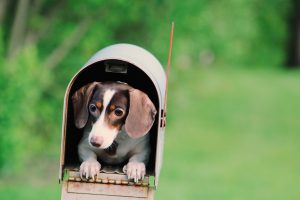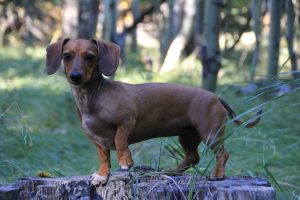
Understanding Pug Behavior: Common Traits and Temperament
Introduction
Pugs, known for their adorable wrinkled faces and playful personalities, are small companion dogs that have captured the hearts of many dog lovers. In this comprehensive guide, we will delve into the world of pugs and explore their common traits and temperament. Whether you are a proud pug owner or considering bringing one into your home, understanding their behavior is key to fostering a harmonious relationship. So, let’s dive in and discover what makes pugs so special!
Table of Contents
- Understanding Pug Behavior: Common Traits and Temperament
- Playful Nature and Energetic Personality
- Affectionate and Loving Disposition
- Social Creatures: Pugs and Other Pets
- Pugs and Children: A Perfect Match?
- Curiosity and Inquisitive Behavior
- Pugs as Alert Watchdogs
- Independent Thinkers: The Pug’s Mindset
- The Importance of Routine and Structure
- Pug Behavior and Training: Challenges and Rewards
- Common Misconceptions About Pug Behavior
- FAQs About Pug Behavior
- What is the average energy level of pugs?
- Are pugs prone to separation anxiety?
- How do pugs interact with strangers?
- Are pugs easy to train?
- Do pugs require a lot of exercise?
- Are pugs good with cats?
- Conclusion
Understanding Pug Behavior: Common Traits and Temperament
Pugs possess a unique set of characteristics that distinguish them from other dog breeds. To truly understand pug behavior, it’s essential to delve into their common traits and temperament.
Pugs, with their playful nature and energetic personality, have captured the hearts of dog lovers around the world. These adorable little canines possess an innate ability to bring happiness and laughter to everyone they encounter. In this article, we will explore the delightful traits of pugs and delve into their playful nature and boundless energy. So, grab a cup of coffee, sit back, and join us on this journey into the world of pugs!
Playful Nature and Energetic Personality: A Pug’s True Essence
The Joys of Interactive Play
Pugs have an insatiable appetite for fun and play. Whether it’s chasing a ball, playing tug-of-war, or simply running around in circles, these furry companions are always up for a good time. Their playful antics will leave you in stitches, as they bounce around with their signature “Pug-titude” and mischievous expressions.
Unleashing their Inner Comedian
With their clown-like behavior, pugs have an extraordinary talent for bringing joy and laughter to those around them. Their expressive faces and humorous antics can turn even the dullest day into a delightful adventure. Pugs are truly masters of comedic timing, and their playful nature adds an element of amusement to every situation.
Bonding through Play Sessions
Interactive play sessions provide an excellent opportunity for pugs to strengthen their bond with their human companions. These lively sessions not only fulfill their need for physical exercise but also serve as a means of communication and socialization. Engaging in playtime activities creates a deeper connection between pugs and their owners, fostering a loving and playful relationship.
The Energizer Bunnies of the Canine World
When it comes to energy, pugs are second to none. They seem to possess an endless supply of vitality, always ready to embark on a new adventure or chase after a bouncing ball. Their exuberance is contagious, and their lively spirit can be a source of inspiration for those around them.
The Playful Nature of Pugs: Unleashing the Fun
Playful Pugs: Exploring Their Natural Inclinations
Pugs have an inherent inclination for playfulness, which can be traced back to their origins as companion dogs. Bred to provide joy and entertainment to their human families, these little bundles of energy have retained their playful nature throughout the centuries. Their love for play is deeply ingrained in their DNA, making them excellent playmates for children and adults alike.
Toys Galore: Pugs’ Playtime Essentials
To keep a pug entertained and happy, it’s important to provide them with a variety of toys. From plush squeaky toys to interactive puzzles, the options are endless. Pugs particularly enjoy toys that challenge their problem-solving skills or provide a rewarding treat. Remember to choose toys suitable for their size and avoid small parts that could pose a choking hazard.
Socializing at the Dog Park: Playdates for Pugs
Dog parks are excellent venues for pugs to engage in social play. These lively gatherings allow them to interact with other dogs, honing their social skills and burning off excess energy. It’s important to ensure the park is safe and well-maintained, and to supervise the play sessions to prevent any mishaps.
Playful Activities for Pugs and Their Humans
In addition to traditional games, pugs thrive on engaging in activities with their human companions. Whether it’s going for a brisk walk, playing hide-and-seek, or even participating in agility training, these activities provide mental stimulation and physical exercise for both pugs and their owners. The key is to find activities that align with their energetic personality and incorporate them into daily routines.
Affectionate and Loving Disposition
One of the endearing qualities of pugs is their affectionate and loving disposition. They form deep bonds with their owners and thrive on human companionship. Pugs are often referred to as “velcro dogs” because they love to stick close to their loved ones, seeking constant cuddles and affection.
Social Creatures: Pugs and Other Pets
Pugs are generally sociable animals and tend to get along well with other pets. Whether it’s another dog, a cat, or even a small rodent, pugs have a friendly and amicable nature that enables them to coexist harmoniously with their furry companions. Proper introductions and gradual socialization are key to successful interactions between pugs and other pets.
Pugs and Children: A Perfect Match?
Pugs have a natural affinity for children and often make excellent family pets. Their playful nature and gentle disposition make them great companions for kids of all ages. However, it’s crucial to supervise interactions between pugs and young children to ensure the safety and well-being of both parties.
Curiosity and Inquisitive Behavior
Pugs are inherently curious creatures. They possess an insatiable appetite for exploring their surroundings and investigating every nook and cranny. Their inquisitive nature often leads them on adventurous quests, sniffing out new scents and investigating intriguing objects. Providing mental stimulation through interactive toys and puzzle games can help satisfy their curiosity.
Pugs as Alert Watchdogs
Despite their small size, pugs excel at being alert watchdogs. They have a keen sense of hearing and will not hesitate to sound the alarm when they sense something out of the ordinary. Their distinctive barks serve as a deterrent, alerting their owners to potential threats or intruders.
Independent Thinkers: The Pug’s Mindset
Pugs possess an independent streak and are known for their stubbornness at times. This independent mindset can pose challenges during training sessions. However, with patience, positive reinforcement, and consistency, pugs can be trained effectively and will eagerly perform tricks and commands to please their owners.
The Importance of Routine and Structure
Pugs thrive in an environment that provides a consistent routine and structure. Establishing a daily schedule for feeding, exercise, and training helps pugs feel secure and enables them to flourish. Consistency in expectations and boundaries is vital for their well-being and helps prevent behavioral issues.
Pug Behavior and Training: Challenges and Rewards
Training a pug can be both challenging and rewarding. Due to their stubborn nature, pugs may require a patient and persistent approach to training. Using positive reinforcement techniques such as treats, praise, and clicker training can help motivate and encourage desired behaviors. Consistency and short, engaging training sessions yield the best results.
Common Misconceptions About Pug Behavior
There are several misconceptions about pug behavior that need to be addressed. Contrary to popular belief, pugs are not lazy dogs. While they do enjoy their leisure time, they also possess bursts of energy and require regular exercise to maintain their overall health. Additionally, pugs are intelligent and capable of learning, dispelling the notion that they are difficult to train.
FAQs About Pug Behavior
Q: What is the average energy level of pugs?
A: Pugs have a moderate energy level. They enjoy daily walks and interactive play sessions but are not overly demanding in terms of exercise.
Q: Are pugs prone to separation anxiety?
A: Pugs are known to develop separation anxiety if left alone for extended periods. They thrive on human companionship and may exhibit destructive behaviors when feeling anxious or lonely.
Q: How do pugs interact with strangers?
A: Pugs are generally friendly toward strangers. However, early socialization is important to ensure they feel comfortable and confident in various social settings.
Q: Are pugs easy to train?
A: Pugs can be stubborn and independent, which can present training challenges. However, with patience, consistency, and positive reinforcement, they can learn and obey commands effectively.
Q: Do pugs require a lot of exercise?
A: While pugs enjoy physical activity, they do not require excessive exercise. Regular walks and playtime, combined with mental stimulation, are sufficient to keep them happy and healthy.
Q: Are pugs good with cats?
A: Pugs can get along well with cats if properly introduced and supervised. Early socialization and positive experiences play a crucial role in fostering a harmonious relationship between pugs and cats.
Conclusion
Understanding pug behavior is key to nurturing a strong and loving bond with these delightful companions. From their playful nature and affectionate disposition to their inquisitive behavior and independent mindset, pugs possess a unique blend of traits that make them truly special. By providing them with love, care, and a structured environment, you can ensure a fulfilling and enriching life for your pug. So, embrace the pug’s endearing qualities and enjoy a lifetime of joy and companionship!






